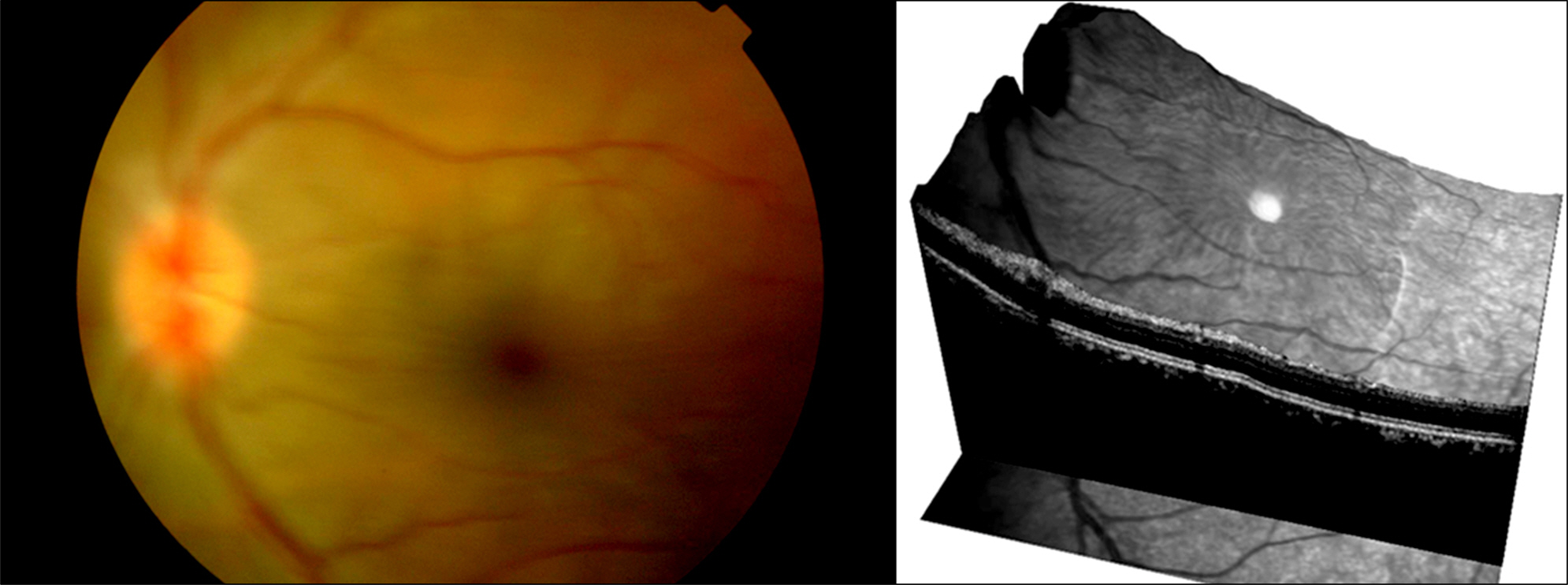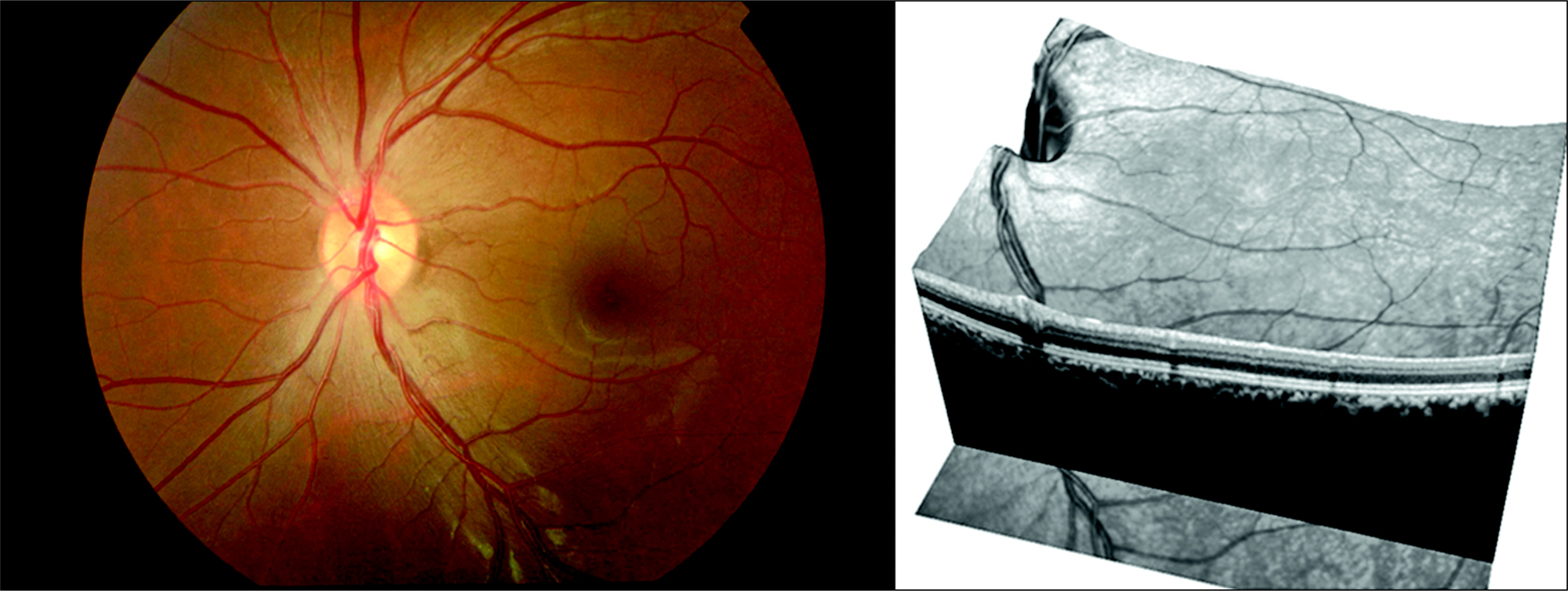J Korean Ophthalmol Soc.
2013 Dec;54(12):1935-1938.
A Case of Traumatic Hypotony Maculopathy Treated by Intravitreal Air Injection
- Affiliations
-
- 1Department of Ophthalmology, Konkuk University Medical Center, Konkuk University School of Medicine, Seoul, Korea. eyekim@kuh.ac.kr
Abstract
- PURPOSE
To report a case of traumatic hypotony maculopathy treated by intravitreal air injection.
CASE SUMMARY
A 20-year-old female presented with decreased visual acuity in the left eye 2 days after trauma. Best corrected visual acuity (BCVA) was 0.5 and the intraocular pressure (IOP) was 5 mm Hg. Indirect ophthalmoscopy revealed chorioretinal folds in the macular area. Gonioscopy showed angle recession from 4 to 7 o'clock. Initially, pressure patching and conservative management were performed on the left eye 10 days after examination. However, deterioration of the chorioretinal fold was observed without any change in IOP. Finally, intravitreal air injection (0.5 cc) was performed 10 days after the start of conservative treatments. Following air injection, the normalization of IOP and gradual reduction of chorioretinal fold was observed. BCVA improved to 1.0 and IOP was maintained between 12 and 14 mm Hg for 24 months after the air injection.
CONCLUSIONS
Intravitreal air injection may safely and effectively treat traumatic hypotony maculopathy.
Figure
Reference
-
References
1. Naumann GO, Völcker HE. [Direct cyclopexy in the treatment of the persistent hypotony syndrome due to traumatic cyclodialysis (author's transl)]. Klin Monbl Augenheilkd. 1981; 179:266–70.2. Brandonisio TM, Newman TL. Hypotonous maculopathy and nor-mal visual acuity secondary to post-traumatic cyclodialysis cleft. Optometry. 2002; 73:620–5.3. Inoue E, Tokuda N, Inoue J. . Treatment of prognostic factors in case of hypotonic maculopathy caused by blunt trauma. Japan J Ophthal Surg. 2007; 20:131–7.4. Friedman SM, Mahootchi A. The use of intravitreal gas for the treatment of ocular hypotony after glaucoma filtration surgery. Ophthalmic Surg Lasers Imaging. 2006; 37:234–5.
Article5. Kim JR, Kim IT. Treatment of hypotony Maculopathy caused by silicone oil removal with gas tamponade. J Korean Ophthalmol Soc. 2010; 51:1028–31.
Article6. Thompson JT. The role of patient age and intraocular gas use in cataract progression after vitrectomy for macular holes and epiretinal membranes. Am J Ophthalmol. 2004; 137:250–7.
Article7. Kim C, Yu HG. Treatment of Hypotony maculopathy caused by traumatic cyclodialysis with vitrectomy, gas tamponade, and cryotherapy. J Korean Ophthalmol Soc. 2006; 47:1691–5.8. Takaya K, Suzuki Y, Nakazawa M. Four cases of hypotony macul-opathy caused by traumatic cyclodialysis and treated by vi-trectomy, cryotherapy, and gas tamponade. Graefes Arch Clin Exp Ophthalmol. 2006; 244:855–8.
Article9. Mutoh T, Matsumoto Y, Chikuda M. Four cases of traumatic hy-potony maculopathy treated by various methods. Clin Ophthalmol. 2011; 5:1223–6.
Article
- Full Text Links
- Actions
-
Cited
- CITED
-
- Close
- Share
- Similar articles
-
- Treatment of Hypotony Maculopathy Caused by Silicone Oil Removal With Gas Tamponade
- Treatment of Hypotony Maculopathy Caused by Traumatic Cyclodialysis with Vitrectomy, Gas Tamponade, and Cryotherapy
- Treatment of Hypotony Retinopathy with Cyclodialysis Cleft by Intravitreal Gas Injection
- Cyclocryotherapy and Intravitreal Gas Tamponade of a Chronic Cyclodialysis Cleft: Case Report
- Clinical Features and Histopathological Findings of Traumatic Cyclodialysis Clefts



